How to Patent Software
Part 1 of 4:
Determining Eligibility
-
 Categorize your invention. Typically a software-based invention is categorized as a process, which is one of the four categories of subject matter invention that are eligible for patent protection.[3]
Categorize your invention. Typically a software-based invention is categorized as a process, which is one of the four categories of subject matter invention that are eligible for patent protection.[3]- As you look at how your software will be used – for example, whether it will be incorporated directly into a computer or distributed separately from the hardware that runs it – you'll gain an understanding of what unique parts of your software must be protected from competitors. [4]
- These processes are typically the inventions that need patent protection. In most cases they solve a problem. For example, suppose you create software that when installed in a washing machine turns the machine off if it is about to overflow. Your patent will protect your process of detecting an imminent overflow and shutting down the machine.
-
 Define the invention. To be patentable, you must have an invention within your software that is new and non-obvious.[5]
Define the invention. To be patentable, you must have an invention within your software that is new and non-obvious.[5]- Additionally, your invention must be tied to a machine or transformation of materials. This essentially means that the invented process requires a machine to complete essential steps. [6] To return to the washing machine example, your invention clearly is tied to the machine because your software causes the on-board computer of a washing machine to accomplish something directly.
- Your claims cannot be based on abstract ideas or concepts to be eligible for patent protection.[7] In other words, you can't patent a mathematical formula, but you might be able to patent a machine that implements a particular application of that formula.[8]
- For example, suppose you've found an equation enabling a computer to navigate a space craft to specific coordinates in space. You would not be able to patent the equation, but you could patent the implementation in software that you designed to be installed in, let's say, the space shuttle. [9]
-
 Research the prior art. Before you file for your patent, you must complete a search of "the prior art". Technically, this includes searching worldwide for patents, applications for patents, any publications disclosing inventions, and any public use of an identical or similar invention. [10]
Research the prior art. Before you file for your patent, you must complete a search of "the prior art". Technically, this includes searching worldwide for patents, applications for patents, any publications disclosing inventions, and any public use of an identical or similar invention. [10]- The goal is to determine whether your invention contributes to the "state of the art" in a way that justifies granting you a patent.
- If you've never performed a search for prior art, the USPTO recommends hiring a registered attorney or agent to help you conduct your search. If you have limited resources, you may be able to find an attorney to work for you for free or at a drastically reduced cost. [11]
- If you want to conduct the patent portion of the search yourself, you may do so using the USPTO's Patent Full Text Database, which contains all patent applications and granted patents from 1976 to the present. [12]
- Your patent search will also enable you to determine that your invention has never been declared to be "obvious." To be patentable, your invention must be "non-obvious" from the viewpoint of someone who is skilled in the field and has access to the existing knowledge about inventions in that field, whether implemented in hardware or software.[13]
- Once you find relevant patents or patent applications, you can use their lists of cited references to delve more deeply into other related publications or uses, all of which form part of the prior art in the field.
- The most relevant references you find will be important to the structure of your patent application -- specifically: your "claims" -- and references must be submitted with your application, so keep track of what you find.
- Another fringe benefit of a comprehensive patent search is the early identification of existing patents of others for which you may need a license prior to selling your own implementation.
Part 2 of 4:
Filing A Provisional Application
-
 Use a provisional application to buy yourself time. A non-provisional application takes a lot of time to complete and process, but a provisional application gives you the benefit of proving invention priority at an earlier effective date. [14]
Use a provisional application to buy yourself time. A non-provisional application takes a lot of time to complete and process, but a provisional application gives you the benefit of proving invention priority at an earlier effective date. [14]- Provisional applications are relatively inexpensive and do not require many of the complications of the longer, non-provisional applications.
- Your provisional application allows you to use the words "patent pending" in relation to your invention for up to 12 months while you work on your non-provisional application. [15] However, it may be beneficial to keep your invention confidential for as long as possible, under highly competitive circumstances. For example, if it takes five years to get your patent issued, your competitors may have already saturated the market with their knock-offs, undermining the value of your patent.
- You may file a provisional or non-provisional application in the USA any time within 12 months of the first public disclosure or sale of your invention. [16]
- However, most other countries have no such "grace period" for filing your application. You generally must file prior to any public use or disclosure of your invention, if you plan to obtain a patent outside the USA. In other words, your own premature disclosure or sale will become prior art that defeats your own patents nearly everywhere outside of the USA. A provisional application may be an inexpensive and quick means to satisfy that filing obligation.
- You are allowed to file additional provisional applications at any time, as you find new features not previously disclosed, and for which you may later want to claim the earliest possible priority.
-
 Complete your provisional application. It must include a complete written description of the invention along with the names of all inventors.
Complete your provisional application. It must include a complete written description of the invention along with the names of all inventors.- To be complete, your provisional application must be accompanied by the filing fee and a cover sheet that identifies the application as a provisional patent application and lists the names and addresses of all inventors, the title of the invention, the name and registration number of any attorneys or agents who worked with you to prepare your application, and the address you intend to use for correspondence with the USPTO. [17]
- You are strongly urged to include any drawings necessary for someone to understand your invention, such as software flow charts and diagrams of any special computer interface you invented.
- You should be as specific as you can about your invention, as you currently understand it. You should later review your provisional applications to make sure you haven't omitted anything, so you can file further versions along the way, as necessary.
-
 File your provisional application. Once you've completed your provisional application, you can file it using the USPTO's electronic filing system. [18]
File your provisional application. Once you've completed your provisional application, you can file it using the USPTO's electronic filing system. [18]- If you prefer to use the mail, you can send a hard copy of your application along with the filing fee to: Commissioner for Patents, P.O. Box 1450, Alexandria, VA 22313-1450. [19]
- In either case, you will get a serial number and filing date for your application. You have up to one year from that filing date in which to claim priority of your provisional application within a non-provisional application.
- Note that your provisional application is not examined for patentability and will not be published. If you fail to submit a complete cover sheet and fees, or to later claim its priority within a year, its file will become abandoned and disposed of.[20]
Part 3 of 4:
Filing A Non-Provisional Application
-
 Assess the commercial viability of your software. Because applying for patents is much more expensive and time-consuming than registering copyrights, you should make a realistic projection of how much money you expect to make with your software before you jump into the patent application process.
Assess the commercial viability of your software. Because applying for patents is much more expensive and time-consuming than registering copyrights, you should make a realistic projection of how much money you expect to make with your software before you jump into the patent application process.- Financial considerations include coming up with projections for not only the retail value of copies you expect to distribute, but also potential license fees, the wholesale value of your invention, tempered with the costs to operate a manufacturing, distribution and support structure yourself, not to mention the potentially huge expense of attempting to enforce even a single patent in the USA.
-
 Consider hiring a registered attorney or agent. Non-provisional patent applications are extremely complex, and patent examiners expect the application to be written and compiled in a specific way. The USPTO recommends you hire someone with experience to help you draw up your non-provisional application, so you don't waste time and money on an incomplete or incorrect application. [21]
Consider hiring a registered attorney or agent. Non-provisional patent applications are extremely complex, and patent examiners expect the application to be written and compiled in a specific way. The USPTO recommends you hire someone with experience to help you draw up your non-provisional application, so you don't waste time and money on an incomplete or incorrect application. [21] -
 Draft your non-provisional application. Your application will include a number of required forms. While you may find forms elsewhere, the USPTO recommends you use the forms it provides to make sure everything is correct. [22]
Draft your non-provisional application. Your application will include a number of required forms. While you may find forms elsewhere, the USPTO recommends you use the forms it provides to make sure everything is correct. [22]- The application transmittal and fee transmittal forms provide a list of the elements of your application and the fees being submitted. You must sign each of these forms after filling them out and include them with your application. [23]
- The application data sheet is similar to the cover sheet included with the provisional application and must be filed to claim the benefit of the prior-filed provisional application. [24]
- Your specification includes documents that describe your invention in full, clear, and exact terms, including how your invention is made and/or used. [25] A software patent application approaches the software's use from an end-user's perspective. It also discusses its use and structure from a systems point of view and the computer's point of view.[26]
- The specification includes a number of documents, such as the background and summary of your invention, a detailed description including drawings, and a list of the claims you are making with respect to your invention. [27]
- Your application will close with the inventor's oath or declaration, in which you declare that you made the application and that you are the original inventor of the invention claimed in the application. If you make an oath, it must be signed in the presence of a notary public. A declaration does not require a notary or any other witness but must be signed. [28]
-
 Prepare to file electronically. Before you file your non-provisional application, you must determine how much the processing fees will be for your application and apply for a customer number and digital certificate. [29]
Prepare to file electronically. Before you file your non-provisional application, you must determine how much the processing fees will be for your application and apply for a customer number and digital certificate. [29]- Your processing fees will depend on the number of claims you have. The total amount is reduced if you qualify as a small entity or a micro entity. Small entities generally are individuals or small businesses with fewer than 500 employees. Micro entities are small entities with fewer than four non-provisional utility patents and income less than three times the median household income. For example, in 2014, the applicant would have to have earned less than $155,817 to qualify as a micro entity.[30]
- If you claim small or micro entity status, you must fill out an additional form certifying that status and include it with your application and supplemental statements with any subsequent filing fees. [31] If your fee status changes at any time, you must file the appropriate fees for your new status, as of the next required filing.
-
 File your application using the electronic filing system. Once you've completed all the forms in the packet, you can submit them along with your filing fee using the USPTO's filing system. [32]
File your application using the electronic filing system. Once you've completed all the forms in the packet, you can submit them along with your filing fee using the USPTO's filing system. [32] -
 Wait for a response from the USPTO. It provides a calculator on its website that you can use to estimate how long it will take to receive the first office action on your patent. [33]
Wait for a response from the USPTO. It provides a calculator on its website that you can use to estimate how long it will take to receive the first office action on your patent. [33]- If you don't hear anything within a year or so, it is your obligation to investigate where things are before your file accidentally becomes "abandoned".
- Similarly, don't lose track of your deadlines on any international patent applications you may want to file.
-
 File replies, appeals, or requests for reconsideration as necessary. [34] Your patent examiner will review your patent application and any claims you make. You may argue the patentability of those claims, but you cannot alter your patent application once it's filed.
File replies, appeals, or requests for reconsideration as necessary. [34] Your patent examiner will review your patent application and any claims you make. You may argue the patentability of those claims, but you cannot alter your patent application once it's filed.- You may, however, amend your claims, to the extent necessary to "narrow" them, but may not add any "new matter" to your application, i.e., something not already disclosed in your original applications (provisional and non-provisional, or otherwise "pending" in this application file).
-
 Pay the issue fee and publication fee. If the patent examiner raises any objections and you are able to overcome them, you'll be sent a "notice of allowance" and given a fee statement. You will then have your patent issued as soon as you pay the required issuance fees and comply with any other requirements stated in the notice. [35]
Pay the issue fee and publication fee. If the patent examiner raises any objections and you are able to overcome them, you'll be sent a "notice of allowance" and given a fee statement. You will then have your patent issued as soon as you pay the required issuance fees and comply with any other requirements stated in the notice. [35]- It may be worth noting that the issuance date terminates the "pendency" of your patent application, so you may want to file other applications for related inventions prior to having your first one issued. That way, they may claim the earliest priority date from your first patent that remains "co-pending". Your patent attorney can explain the intricacies of "continuation-in-part", "divisionals" and related tactics.
-
 Maintain your patent. To keep patent protection, you must pay maintenance fees 3.5, 7.5, and 11.5 years after your patent is granted. [36]
Maintain your patent. To keep patent protection, you must pay maintenance fees 3.5, 7.5, and 11.5 years after your patent is granted. [36]- As with other USPTO fees, you will pay lower maintenance fees if you qualify as a small entity or a micro entity. [37]
- USPTO fees change occasionally, so you'll need to check the fee schedule to find out how much you owe. Recently the fees for a small entity were $800 after 3.5 years, $1,800 after 7.5 years, and $3,700 after 11.5 years. [38]
Part 4 of 4:
Considering Copyright Protection
-
 Understand the difference between a patent and a copyright. Copyright protects the particular expression of your process, while a patent protects the process itself. [39]
Understand the difference between a patent and a copyright. Copyright protects the particular expression of your process, while a patent protects the process itself. [39]- Copyright is simpler, in that it automatically begins from the moment your software is created and lasts many years after your death. A patent, on the other hand, requires an acceptable invention disclosure and lasts only around 20 years. [40]
- Copyright registration is easy, inexpensive, and can be completed on your own, while a full patent application typically requires legal assistance. [41]
- Some countries do not recognize patents of software-related inventions. This can be a problem if you plan to sell your program globally. [42]
- Keep in mind that the law does not technically require any code to be written for the software in order for it to be patentable, however, any original code that is written would be covered by your copyright. [43]
- If you have written basic code for the software, a registered copyright can provide a layer of protection for your disclosure while you complete the patent application process, if you decide to do so. Copyright refers only to the form of the work of authorship, not to any functions or systems it may describe. If someone obtains your software and rewrites it to duplicate the functions, it would not be a copyright infringement.
- Also keep in mind that when you register a claim to a copyright, you are making a public record, [44] so if you do plan on filing a patent application you should consider the patent disclosure grace periods described above. [45] You may be allowed to deposit only small portions of your software, with redacted trade secrets, in some circumstances. [46]
-
 Fill out a copyright registration form. You may register your copyright either by using the eCO electronic system or by filling out a paper form and mailing it to the Copyright Office along with a check for your fees and copies of your software. [47]
Fill out a copyright registration form. You may register your copyright either by using the eCO electronic system or by filling out a paper form and mailing it to the Copyright Office along with a check for your fees and copies of your software. [47]- The Copyright Office recommends using the electronic system, which is faster and allows you to monitor the status of your registration online. [48]
- If you are registering with a paper form, you should either fill it in on your computer or write in your information by hand using a black pen. [49]
-
 File your copyright registration. When you file for copyright you must send your application, the filing fee, and one copy of your software for deposit with the Library of Congress.[50]
File your copyright registration. When you file for copyright you must send your application, the filing fee, and one copy of your software for deposit with the Library of Congress.[50]- The filing fee is $35 if you use the online system and $85 if you mail a paper application. [51]
- If your work has been published, and you are filing a hard copy, you may be required to file two copies of the best edition of your work. [52]
- Paper applications should be accompanied by your deposit (copy) materials and a nonrefundable filing fee in the form of a check or money order payable to the Register of Copyrights. Mail these items to the Library of Congress, Copyright Office-TX, 101 Independence Avenue SE, Washington, DC 20559. [53] Your online application may be completed using a credit card, debit card, ACH debit, or by reference to a "deposit account" you have set up in the Copyright Office.
- If there are any problems found during the examination of your claim of copyright, you will be notified and given time to correct any errors.
4.5 ★ | 2 Vote
You should read it
- Samsung costs more money for Nokia's patent
- Apple received a patent for flexural screen
- What is special about connecting Windows 10 with Microsoft's iPhone?
- Today, Office 2013 will debut with Office 365?
- Unveiling Apple's patent-pending folding screen iPhone is even better than Samsung
- Office 2013 launches, allowing users to 'rent' to use

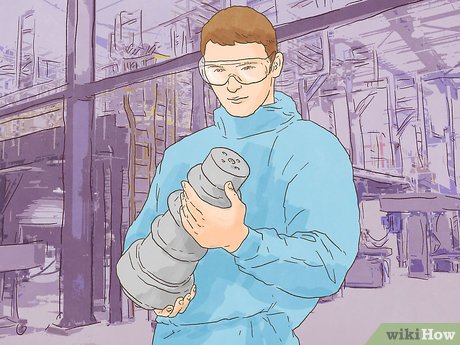
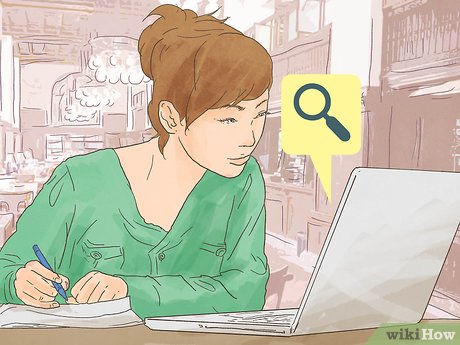
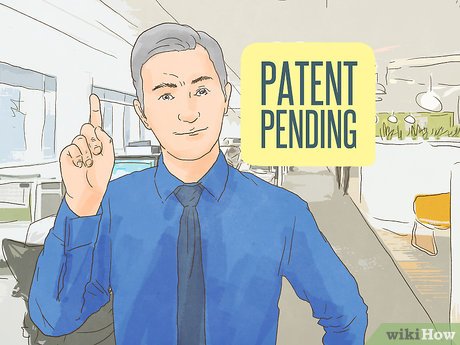

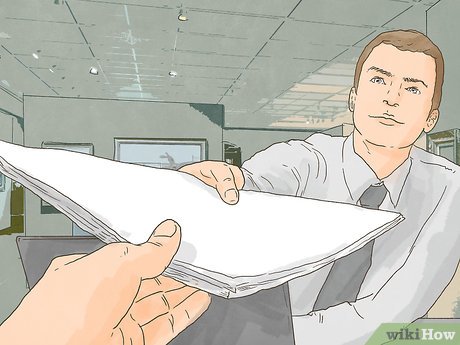
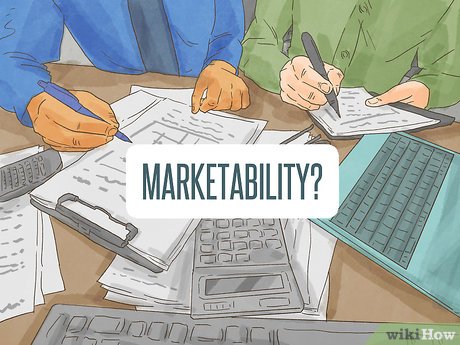

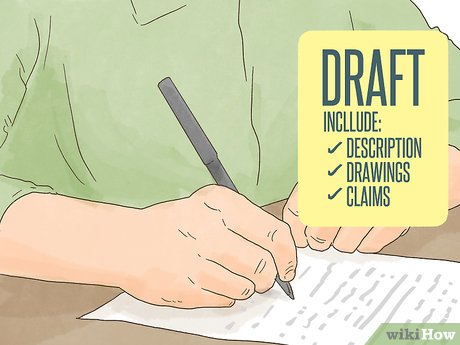
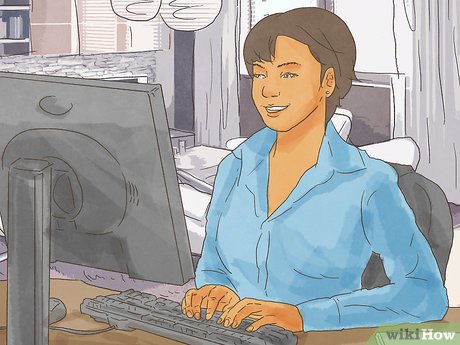
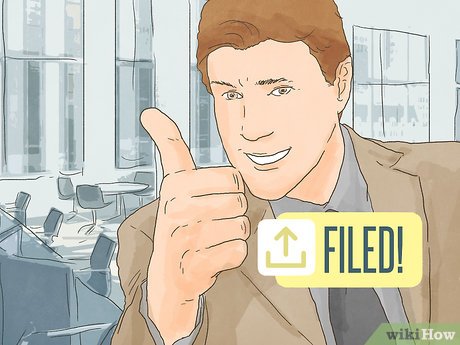
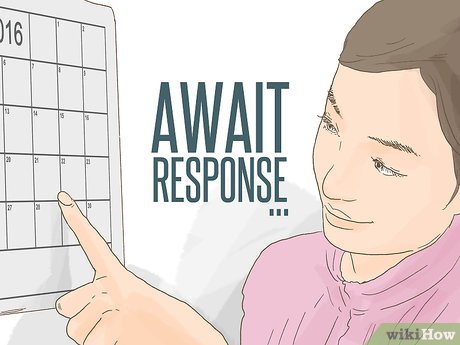
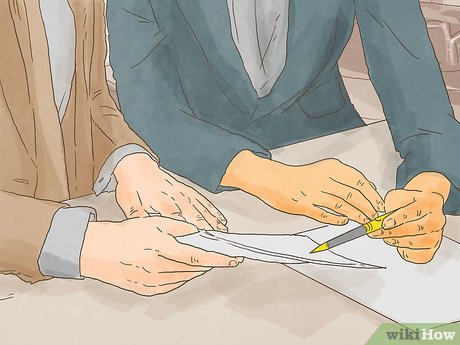
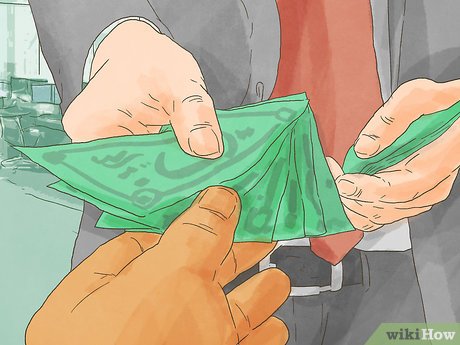
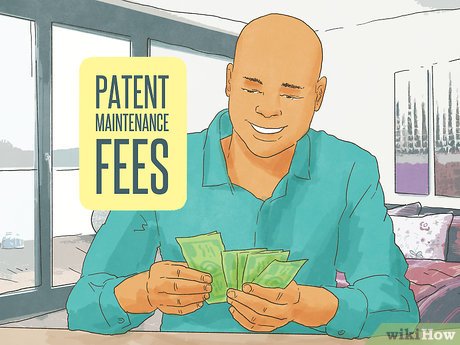
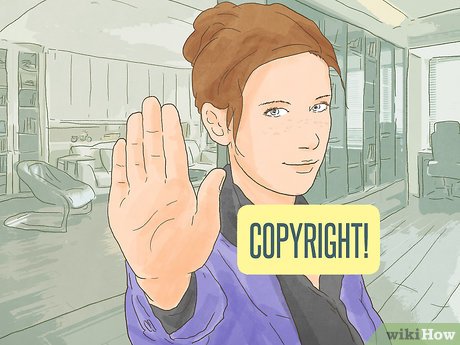
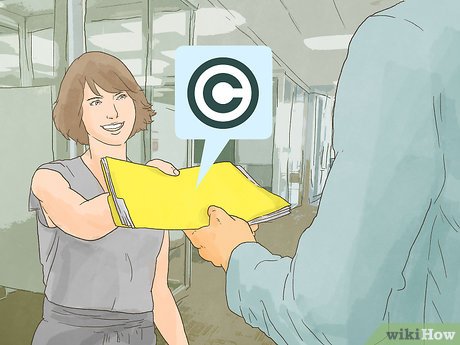
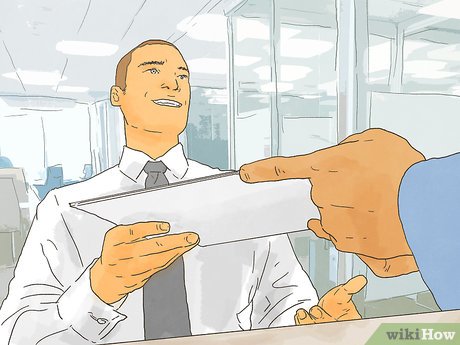
 How to Uninstall MacKeeper
How to Uninstall MacKeeper How to Use Trello
How to Use Trello How to Burn a Movie
How to Burn a Movie How to Convert Videos to MP3
How to Convert Videos to MP3 How to Convert Pages to Word
How to Convert Pages to Word How to Use Google Voice Search
How to Use Google Voice Search